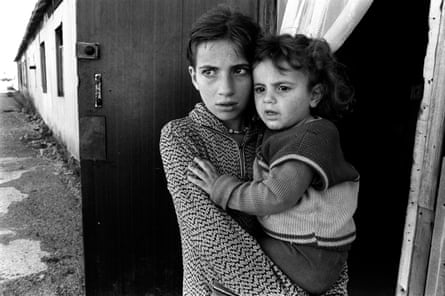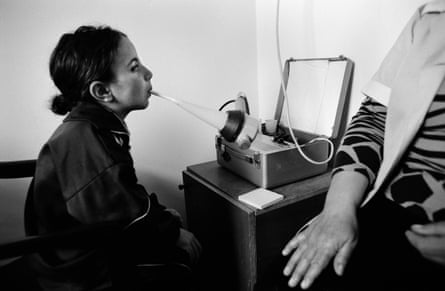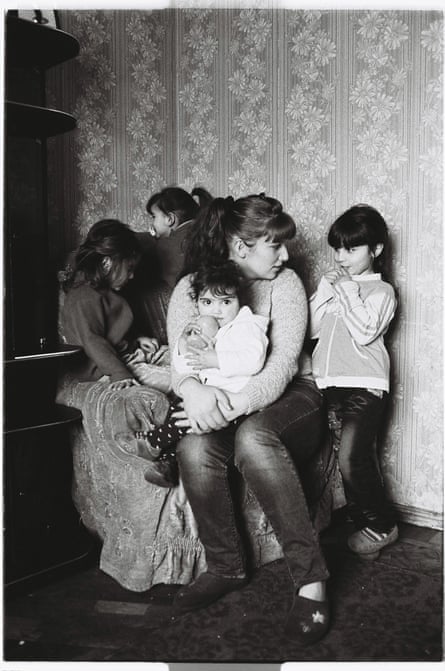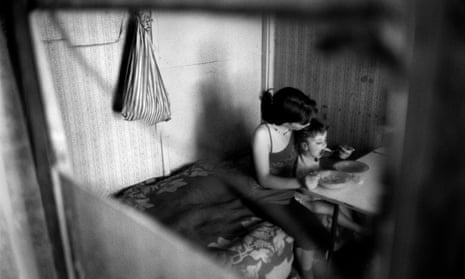Aida and Tatevik: 2005
Aida, 13, is often “mother” to her two-and-a-half-year-old sister, Tatevik, as their mother and 14-year-old brother seek seasonal work in the countryside. At their home in Gyumri – Armenia’s second-largest city, 125km north of the capital, Yerevan – Aida gets up at 8am and dresses her sister. At 9am they have a cup of tea with a small piece of bread. Then Aida begins doing the housework and draws water from a communal tap into plastic bottles to use at home. There is no electricity, running water or heating in the house. Aida washes their clothes and later plays with her younger sister, whom she dotes on.
At 3pm they have a small bowl of soup. There is nothing more till 9pm, when they have a cup of tea – but this time without bread. Aida is worried about her sister’s health. “I had two sisters who died of pneumonia [one at two months, the other at two years], and the doctor says that unless Tatevik receives good shelter and adequate food she will also die of pneumonia,” she says.

Aida has never had a holiday. She does all the household chores and attends school. Her weekends and holidays are spent looking after her younger sister. In addition to preparing what little food they have to eat, Aida does the shopping, cleaning and washing. Only when she has finished all her duties does she have time to play with her sister. The walls of their home are damp and some of the windows are broken. Aida has no friends outside of school – she says she doesn’t like to talk too much, preferring to be alone. Her dream is to have enough money to look after her family. When she was asked what she would like as a present, she asked for a coloured pencil.
Aida and Tatevik: 2010

After 2005, Tatevik (above, aged seven) contracted tuberculosis and was taken into care. In a sanatorium five hours away from her home, she recovered – but wasn’t able to see Aida for more than two years. Aida got married, and by 2010, when she was 18, was pregnant with her second child. She continued to live in dire conditions with no running water, electricity or heating. Instead of worrying about Tatevik, she feared for the health of her daughter as she couldn’t afford to feed her properly or to buy medicines when she fell ill. When her husband was not away building roads and houses in Siberia, he washed cars to earn money.
Aida and Tatevik: 2015

Today Aida squats with her four daughters (above) in a damp, two-room apartment far from any playground or nursery. Clothes are bought on credit. Heat comes from a single gas burner on which Aida also warms the water to sponge-bathe the children, as they have no bathroom. Most days the children survive on fried potatoes. In winter they can afford to buy fruit and vegetables only once or twice a month. All week they look forward to a Saturday visit from Tatevik (below, with Aida), when she is released from Gyumri’s residential school.

